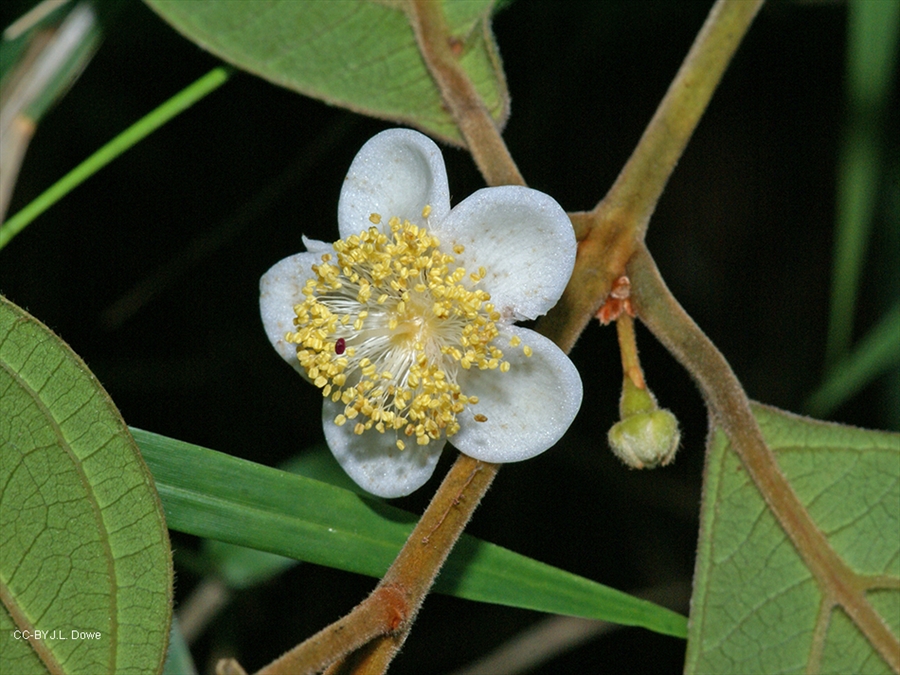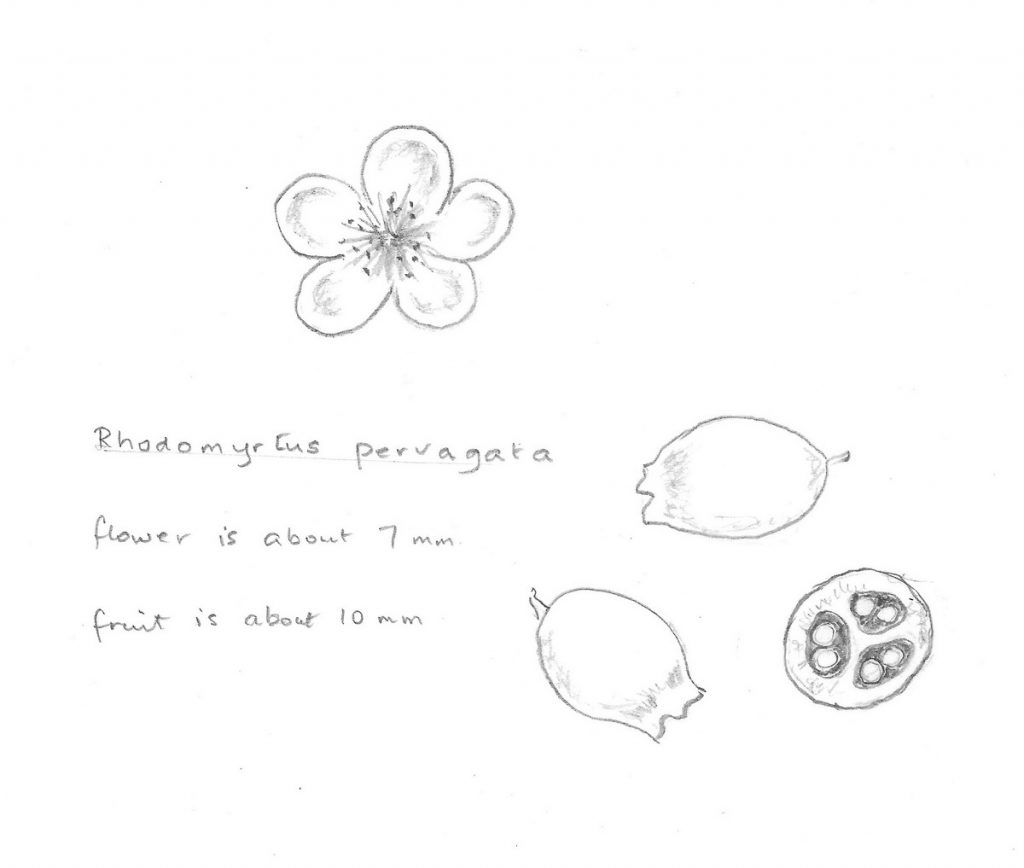Also known as Ironwood and Rusty Rhodomyrtus
Family: Myrtaceae;
Rhodomyrtus pervagata first came to my attention some years ago when Linda Venn called me over to her garden to see a strange bird feasting on the fruits of a small tree. The rather large bird had been there all day and smaller birds, evidently afraid to approach, kept up a clamour of scolding and complaining about the large bird’s presence. The intruder was identified by the late Roy Mackay as a juvenile pallid cuckoo, a bird not commonly seen in Paluma. It continued eating, oblivious of the other birds, until every fruit was gone. The small tree, or shrub, was a Rhodomyrtus pervagata.
There are several species of Rhodomyrtus: twenty occurring in parts of S E Asia, the Solomon Islands and New Caledonia. In Australia, there are seven species, six of which are found in rainforests of tropical Queensland. Rhodomyrtus pervagata is endemic from Mount Misery near Cooktown to Paluma, growing at altitudes from 30 to 1250 metres in well-developed and mountain rainforest. It grows well in disturbed areas and is characteristic of rainforest regrowth.

A shrub, or small tree, it grows to about 10 metres high. New twigs are covered in fine, rusty hairs, giving them a furry appearance. The simple leaves are distinctive, being lanceolate and measuring 50 – 80 mm x 20 – 70 mm. The upper surface is dark green and sparsely glabrous, except for fine hairs along the mid-rib. The underside is pale and covered with fine rusty hairs and numerous oil dots which can be seen with a lens. The under-side has a prominent mid-rib and strongly defined lateral and intra-marginal veins.

The tiny flowers are axillary, growing in clusters of up to three. There are five cup-shaped petals about 5 mm in size surrounding a centre of yellow stamens. They are so small, they are easily missed, especially as the petals tend not to open up fully.

The tiny fruits are fleshy cream to brown berries, about 12 -14 mm long, and densely packed with up to 84 tiny seeds. The fruit, cut lengthwise, reveals the seeds stacked in rows of seven to fourteen. Many birds feed on the fruit of Rhodomyrtus.

There are many of these small trees in Paluma, tucked away in the understorey along the roadsides. Possibly, the easiest to locate are at the roadsides of the cutting between the Rainforest Inn driveway and Loop Road.
Text and Photos (unless otherwise marked) by Colwyn Campbell
